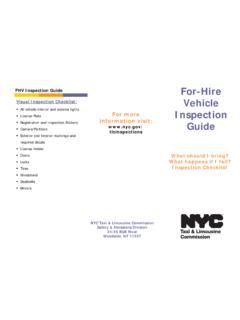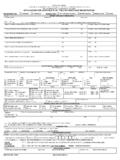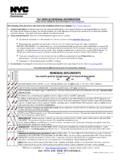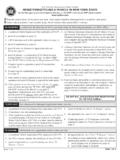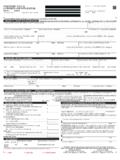Transcription of Published by the Michigan State Police Motor Carrier ...
1 Michigan FARMER S TRANSPORTATION GUIDEBOOK Published by the Michigan State Police Motor Carrier Division In conjunction with the Michigan Farm Bureau March 2007 This document may be reproduced without prior permission. 1 Michigan FARMER S TRANSPORTATION GUIDEBOOK March 2007 1 This publication is based on Michigan State statutes, including the Michigan adoption of the Federal Motor vehicle Safety Regulations (FMCSR). State statutes referenced in this document include: The Michigan vehicle Code (MVC, Act 300 of 1949, as amended); The Michigan Motor Carrier Safety Act; (MMCSA, Act 181 of 1963, as amended); and The Michigan Motor Carrier Fuel Tax Act (MMCFTA, Act 119 of 1980, as amended).
2 All Michigan statutes can be viewed, printed, and saved at Some counties, cities or townships may have additional laws on use of local streets or roads. This publication is for educational purposes only and does not attempt to substitute for or directly quote the laws referenced herein. Although it is intended to keep this document current, these regulations are constantly being revised, so readers are cautioned to consult the actual regulations for compliance. This document does not address all of the regulations, but does discuss those regulations that seem to generate the most questions and concern among farmers. This document may be reproduced without prior permission. SOURCES OF INFORMATION The Michigan Trucking Association: 517-321-1951 or of Michigan and Federal laws, forms and documents, etc.
3 The Michigan Center for Truck Safety: 800-682-4682 or Drivers Guidebook, Questions answered, Training, etc. The Michigan State Police Motor Carrier Division: Contact your local State Police post or The Michigan Department of Agriculture: 800-292-3939 or Department of Transportation, Federal Motor Carrier Safety Administration: 202-366-1790 or FMCSA Violation Hotline 888-368-7238 Safety Ratings/USDOT Numbers/New Entrants 800-832-5660 or Waivers 202-366-4001 Hazardous Materials Hotline 800-467-4922 or vehicle AND DRIVER STANDARDS General Michigan has adopted the Federal Motor Carrier Safety Regulations (FMCSR) and the Federal Hazardous Materials Regulations (FHMR) into State law. Compliance with these regulations is required unless a specific federal or State exception exists.
4 Intrastate: When a load originates and ends within the same State without crossing any State or federal boundaries during shipment. Interstate: When a load originates in one State , and crosses in transit, or ends across another State or federal boundary. Michigan FARMER S TRANSPORTATION GUIDEBOOK March 2007 2 Commercial Motor vehicle (Section of the FMCSR): Designed and used on public highways to transport passengers or property; Has either a gross weight rating (single or combination) of 10,001 lbs. or more; Is designed for carrying more than 15 passengers including the driver (not for compensation); Is designed for carrying more than 8 passengers including the driver (for compensation); Is used to transport hazardous materials in an amount that requires placarding.
5 As used above, for compensation means transportation for-hire. Not for compensation would include transportation of employees or contractors in the furtherance of the business or farm. If the vehicle meets the above definition, then it must comply with the Federal Motor Carrier Safety Regulations (FMCSR), unless excepted. Farm vehicle Driver: Farm vehicle Driver is a person who operates a commercial Motor vehicle that is all of the following: 1) controlled and operated by a farmer, their employee, or family member; 2) being used to transport agricultural products, farm supplies, or farm machinery to or from a farm; 3) not being used in a for-hire operation; 4) not carrying hazardous materials in an amount that requires placarding; AND 5) being used within 150 air miles of the farm.
6 As used in the FMCSR, farmer includes a business that operates a farm. The term for-hire means a person engaged in transportation of property for compensation. Item # 4 would include anhydrous ammonia tanks. NOTE: The term Farm vehicle Driver is used in several places in the Federal Motor Carrier Safety Regulations, usually providing relief from compliance with the regulations. It must be remembered, however, that to use that exception from the regulations, you must comply with ALL of the above components of the definition. NOTE: There is no exception in State or Federal law for farm or agricultural operations from the vehicle equipment standards. Farmers must comply with Parts 392 (Driving of Motor Vehicles), 393 (Parts and Accessories), and 396 (Inspection, Repair, and Maintenance) of the Federal Motor Carrier Safety Regulations.
7 NOTE: The term for-hire can differ considerably from one act of law to another. Generally speaking, for-hire means a verbal or written contract to transport someone else s property for monetary compensation. For certain statutes, it may include compensation other than monetary. General Exceptions Hours of Service For intrastate transportation, Farm vehicle Drivers are not required to comply with hours of service and log books, Part 395 of the Federal Motor Carrier Safety Regulations (MMCSA, ), provided they stay within all the provisions of the definition of Farm vehicle Driver (Section ), including the 150 air-mile radius of the farm. For interstate transportation, agricultural operations are allowed an exemption from all of the Hours of Service regulations if operating within a 100 air-mile radius (115 land miles) from the source of the commodities or the distribution point for the farm supplies.
8 For custom harvesters, USDOT interpretations allow the Motor Carrier to assign drivers to a new work reporting location, thus changing the base for the 100 air-mile radius calculation. Also, USDOT interpretations State that fuel can meet the definition of an agricultural commodity if being used in tractors and other farm equipment. USDOT interpretations State that poultry, poultry feed, livestock, slaughtered animals, or ..grain, corn, hay, etc. used to feed animals, may not use the agricultural operations exception. For interstate transportation outside of the 100 air-mile radius, farmers must comply with the hours of service requirements (Part 395 of the FMCSR). Michigan FARMER S TRANSPORTATION GUIDEBOOK March 2007 3 Driver Files For intrastate transportation (MMCSA, ), Farm vehicle Drivers are excepted from: Employment applications; Investigations and Inquiries of prospective drivers; Road tests; Medical qualifications and Medical Certificates; Maintenance of driver files.
9 Driver Qualifications For interstate transportation, single Motor vehicles do not have to comply with any of the provisions of Part 391 (Qualification of Drivers). For interstate transportation of combination Motor vehicles (articulated; , truck tractor and semi trailer or a pickup truck and a stock trailer), Farm vehicle Drivers are excepted from: maintaining list of violations; road test; employment application; investigation and inquiries on prospective drivers; and maintenance of driver files. In interstate transportation, farm vehicle drivers of combination vehicles ( , truck tractor and semi trailer), must have a medical certificate. Additional exceptions are provided to farm custom operations. Part 391 (Driver Qualifications, including medical certificates) does not apply to drivers engaged in custom-harvesting operations, if the vehicle is used to transport farm machinery, supplies to or from a farm for custom-harvesting, or to transport custom-harvested crops to storage or market.
10 Part 391 also does not apply to beekeepers engaged in the seasonal transportation of bees. General Regulations Identification: If the vehicle meets the federal definition of a commercial Motor vehicle (see page 2), it must display the company s name and USDOT number on both sides of the vehicle . The identification must be in a contrasting color and legible from at least 50 feet. However, for intrastate transportation the identification requirements do not apply to a truck with a gross vehicle weight of less than 10,000 lbs. that is eligible for and registered under a farm license plate. A commercial vehicle with an actual gross weight or GVWR of more than 5,000 lbs. but less than 10,000 lbs. that does not have a farm license plate is required to display the company name, city, and State , on both sides, in a contrasting color, no less than 3 in height.










